For decades, a group known as the “anchor-outs” enjoyed a relatively peaceful existence in a corner of the San Francisco Bay. The mariners carved out an affordable, bohemian community on the water, in a county where the median home price recently hit $1.8m.
But their haven could be coming to an end – and with it, a rapidly disappearing way of life.
The anchor-outs live aboard semi-derelict boats abutting the town of Sausalito, an upscale enclave just north of the Golden Gate Bridge in Marin county where mansions boast floor-to-ceiling windows overlooking the water. Tourists arrive by ferry from the city on weekends, strolling the promenade of restaurants, wine bars, art galleries and boutiques.
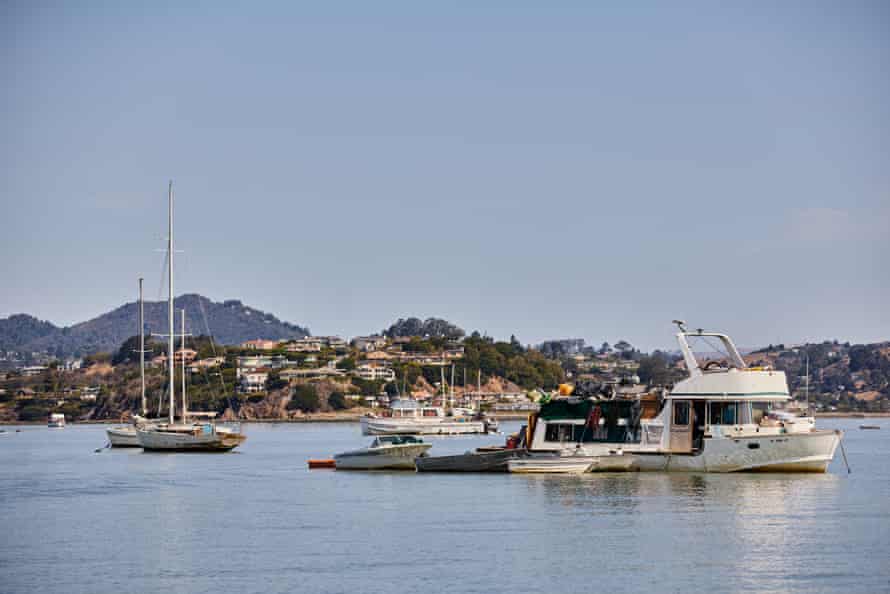
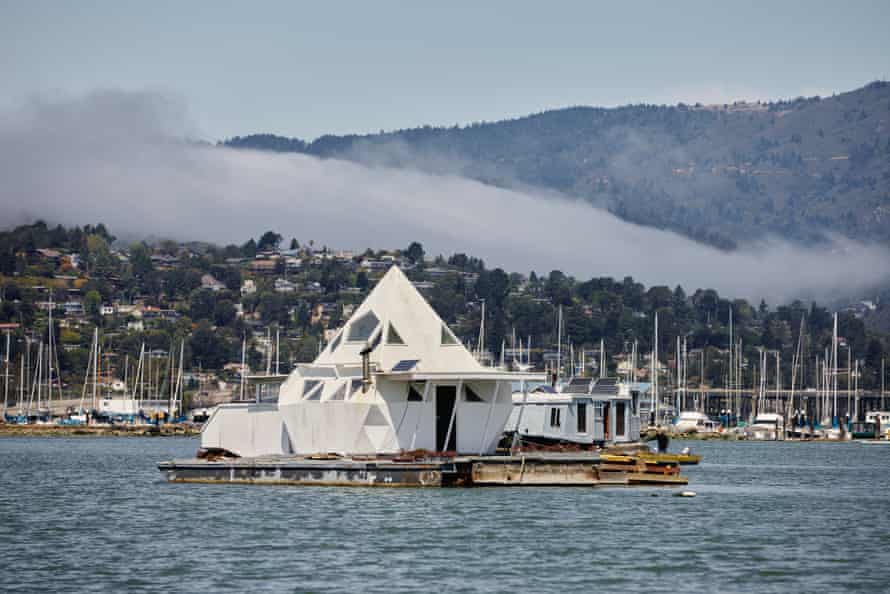
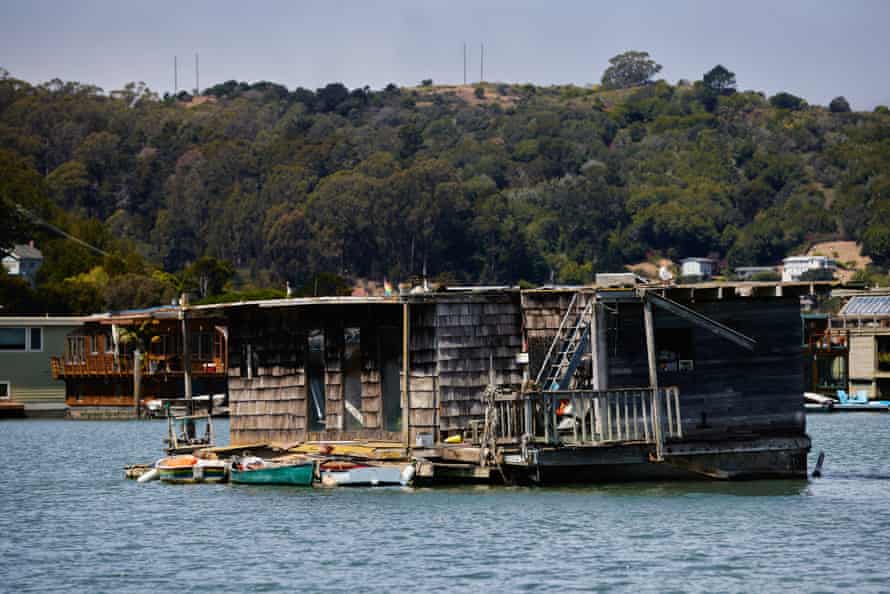
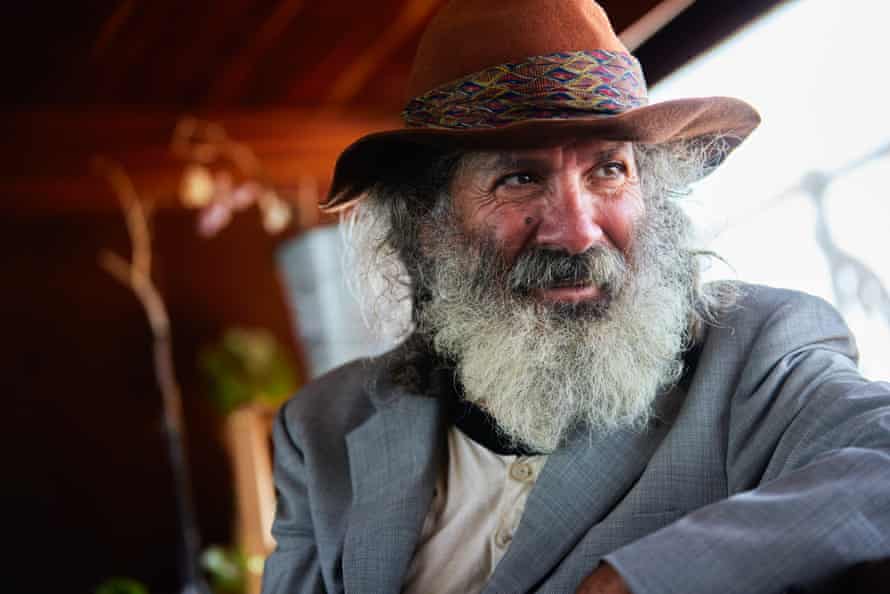
Top: Anchor-out boats sit in Richardson Bay in Sausalito, California, last month. Bottom: Jeff Jacob Chase looks out the window of a friend’s boat.
The agency that oversees the local waterway known as the Richardson Bay has in recent months begun a fervent crackdown on the boat dwellers, who they say are here illegally and pose a threat to safety and the marine environment. Determined to clear the waters, a hardline harbormaster has even begun confiscating and destroying boats that overstay their welcome.
The anchor-outs, meanwhile, are fighting back, staging protests and clashing with authorities who they say are in effect rendering them homeless.
On a recent afternoon, the sounds of a tractor’s hydraulic arm crushing a fiberglass sailboat carried on the wind. The noise lingered over a homeless encampment that has grown near the waterfront. “Camp Cormorant”, as boaters nicknamed it, has become the political base of the anchor-outs’ protest movement.
For the 50 or so people camped in neat rows of tents, the frequent whir, crunch and crack of the crusher represents their way of life being torn to bits. Many say they were forced to decamp here after their vessels were destroyed.
“They want to take our homes and shut the anchorage down,” says Jeff Jacob Chase, a 20-year anchor-out with a trademark pirate swagger, a long, salt-and-pepper beard, spectacles and floppy hat. “They basically want to eradicate a culture.”

The houseboat community in Sausalito in the late 1960s.
In a region dominated by water, boats have been used as a cheap source of housing since the Gold Rush, when miners lived aboard vessels. In the 1950s, a community of bohemians and artists grew along the Sausalito shoreline, with residents building wildly creative floating constructions that offered shelter and inspiration to Beat writers and artists such as Allen Ginsberg and Shel Silverstein. It transformed into a hippy music scene in the 1960s, but in the mid-1970s, residents of those houseboats were mostly pushed out in a series of local enforcement actions known as “the houseboat wars”.
Despite its beatnik origins, today the Richardson Bay hosts a unique waterfront class system.
At the top are the authorized houseboat marinas where floating, luxury homes with shingle siding, plumbing and electricity can sell for over $1m. Other boaters, known as live-aboards, can pay a monthly fee to dwell on their sailboats and cabin cruisers in a marina slip, but the number of spots is tightly controlled and authorities say there is a long waiting list. Finally there are the anchor-outs, whom some see as the last of a dying breed of free spirits who eschew the world of rent deposits, credit checks and bills.
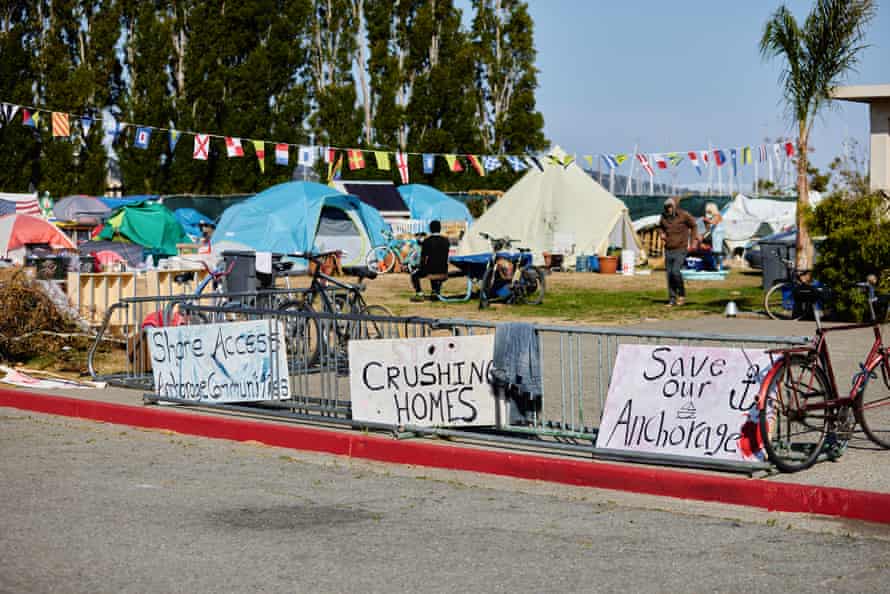
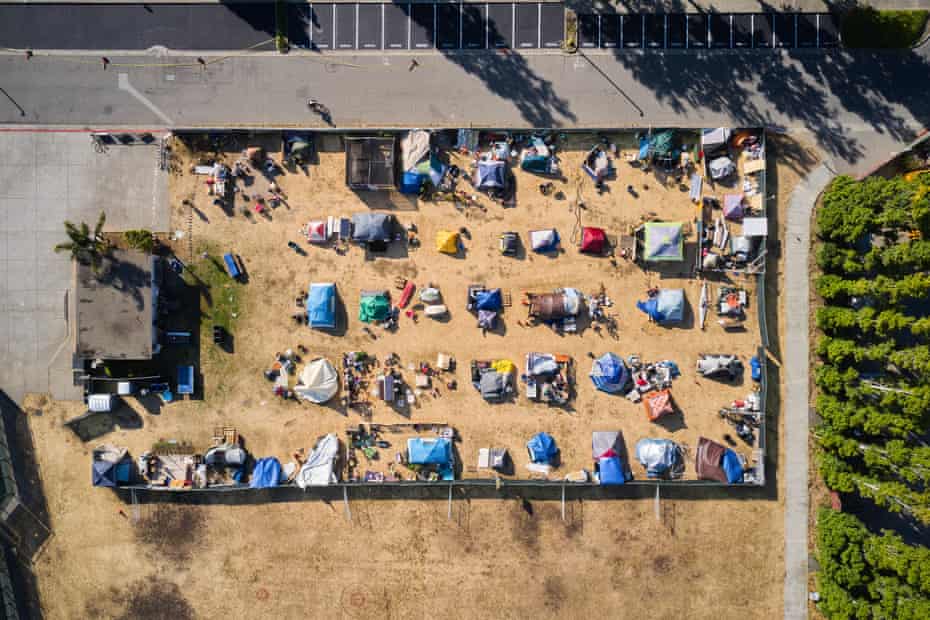
Many anchor-outs now live in a homeless encampment.
The anchor-outs get by with minimal resources, hauling their own water and generating power from tiny solar panels. They brave the bay’s famous winds to travel to and from the shore in rowboats or motorized dinghies.
Housing advocates say the battle over their way of life is just the latest chapter in a crisis that has seen living options for low-income residents all but vanish.
Chase still has his sailboat, a sloop named the Jubilee, but he also spends time in Camp Cormorant, organizing his fellow boaters to protest against the evictions as an officer of the local chapter of the California Homeless Union.
“What they’re doing is criminalizing this entire community,” said Chase.
Waterfront patrols and crushed boats
Curtis Havel, the harbormaster, would be the first to call himself the villain of this story.
It’s a breezy Wednesday morning and Havel is out patrolling the waters. He stands on the bow of his aluminum patrol boat and gestures at the spectacular scenery around him.
“For a long time, people regarded Richardson’s Bay as this sort of bohemian live-and-let-live situation and the vessel count continued to increase,” he says. “Now it’s time for us to enforce our rules.”
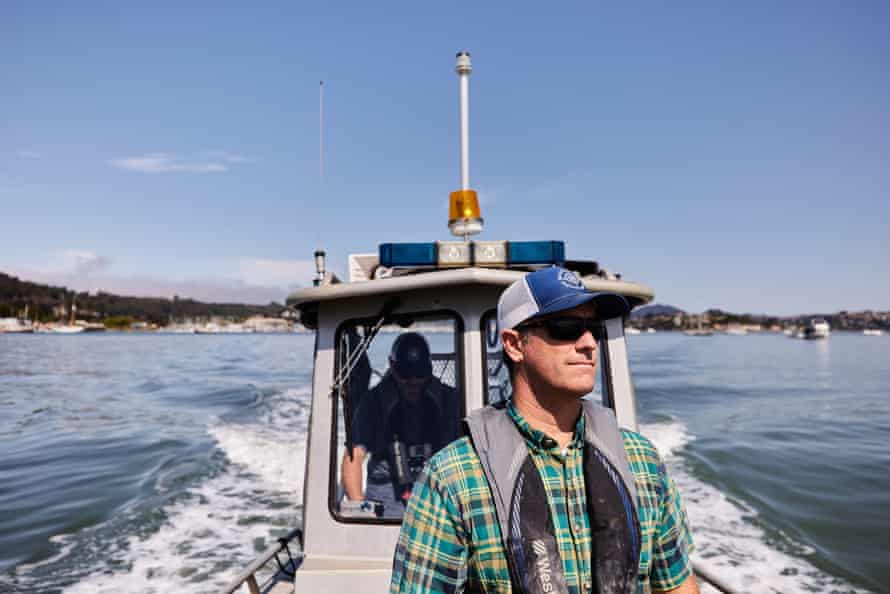
Curtis Havel looks on as he patrols Richardson Bay.
The state agency that oversees the San Francisco Bay had been building pressure on local authorities to act, and Havel says clearing the harbor of illegal anchoring was the primary mission he was given when hired two years ago.
Citing a long-unenforced rule that says boats can anchor for no more than 72 hours, Havel has been confiscating boats, dragging them into a shipyard and crushing them into chunks. Of the 190 boats out here when he took over, Havel says he has gotten rid of all but 86 vessels – about 70 of which are now occupied by full-time residents.
Havel argues boats and their occupants can cause a laundry list of problems and environmental concerns. Their anchors drag along the bottom and destroy the eelgrass, an important habitat for marine life. Boats break loose from their anchors during storms, endangering those aboard and others along the shore. The residents dump sewage and leave abandoned boats and parts polluting the bay. And there have been complaints about drug use and crime.
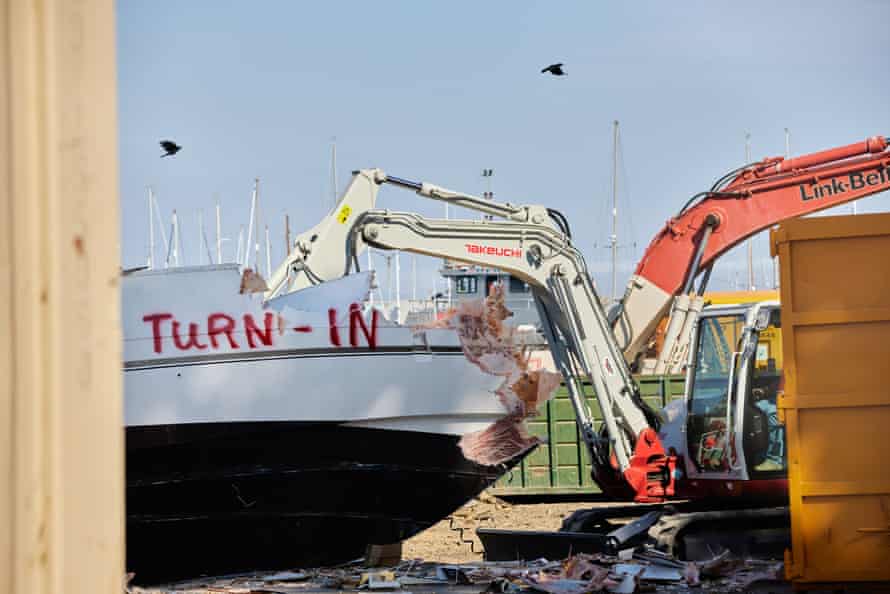
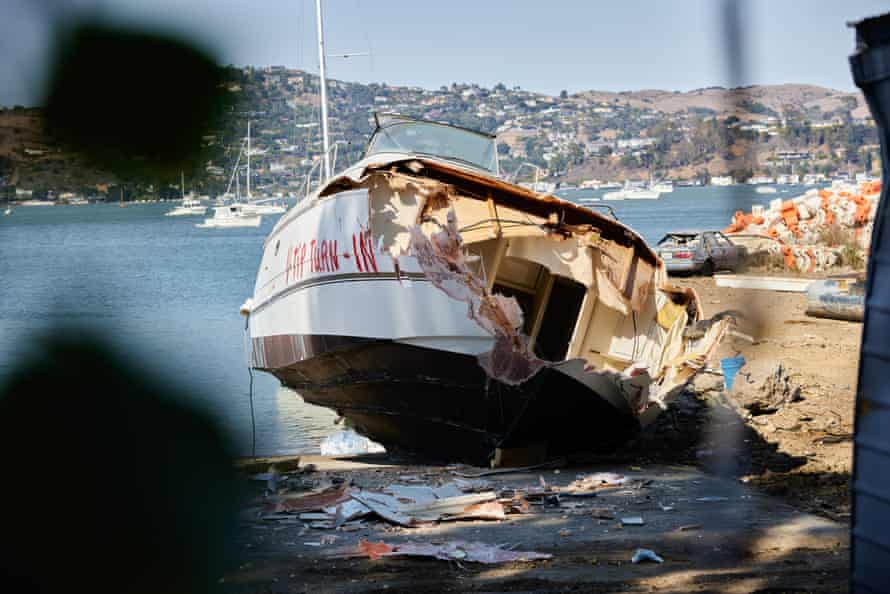
A boat is destroyed at the dock of the army corps of engineers in July.
Havel says his enforcement has made him unpopular, but he’s willing to take some flak in order to get the job done.
His patrol boat edges up to the side of a rusting, metal-hulled craft, piled with plywood and corrugated metal, which appears to have become home to a flock of seagulls. Havel had already plastered a note on the side of the boat, warning that it would be disposed of if not removed within 10 days.
“I hate to even call this a boat; at this point it’s just a shell,” he says, adding that he hasn’t seen occupants aboard the vessel for several months. “That’s a dead boat you’re looking at.”
Havel recently announced plans to leave his role at the end of the month, and while his agency appears undeterred in its mission, he says they are trying to find long-term solutions. The state has agreed to extend the timeline for clearing the bay by a few years, and for those still living aboard, Havel says, the county plans to send outreach workers to help find other housing.
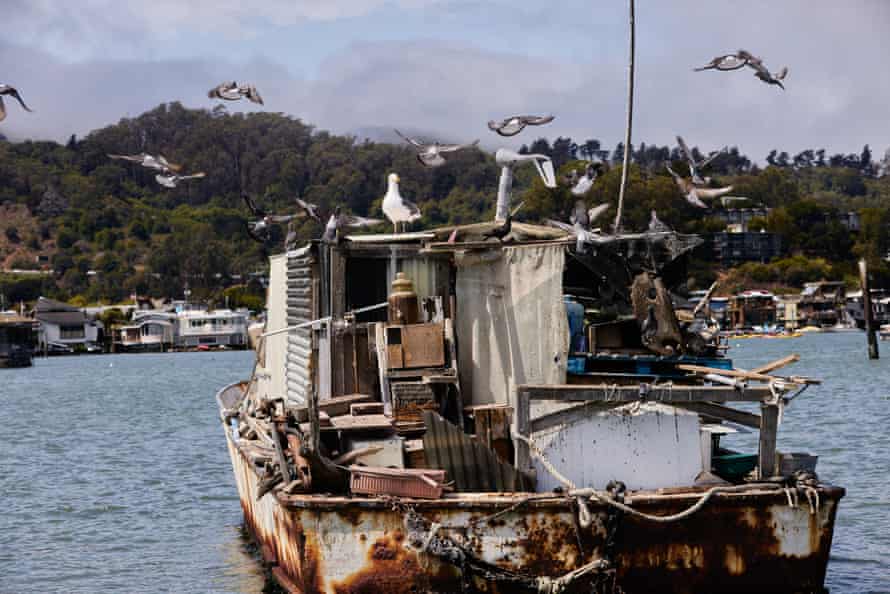
Seagulls flock around a boat.
But around the anchorage, signs of rebellion abound. Some boats fly upside down American flags, the maritime signal for distress. Occupants of a boat named Evolution have taped up a big, hand-stenciled “R”, rebranding it the “REvolution”.
As Havel patrols, a metal dinghy motors up behind him. The driver, a boat-dweller with a white megaphone, starts shouting at Havel, peppering his taunts with expletives. “Tell them how you’ve been crushing people’s homes, sir,” yells the man. Havel, however, appears unflustered.
“It’s always been politically charged; it’s just getting heightened because we’re doing something.”
‘I’m not homeless, I’m houseless’
Authorities say they have only been seizing abandoned and derelict boats, but around Camp Cormorant, numerous residents claim to have lost their homes to the crusher.
Michael Adams and his wife lived in the anchorage for decades, raising two kids. The couple had recently become afraid to leave their boat, a historic 1928 pleasure cruiser named the Marlin, for fear it would get destroyed.
“I went off one morning and he crushed it,” says Adams as he paints a mural on the plywood patio he built in front of the tent he and his wife now call home.
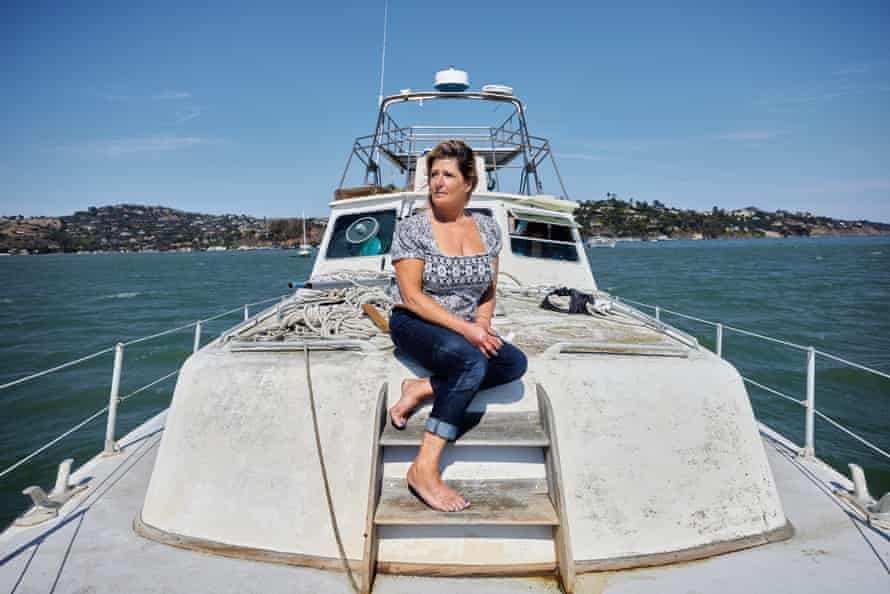
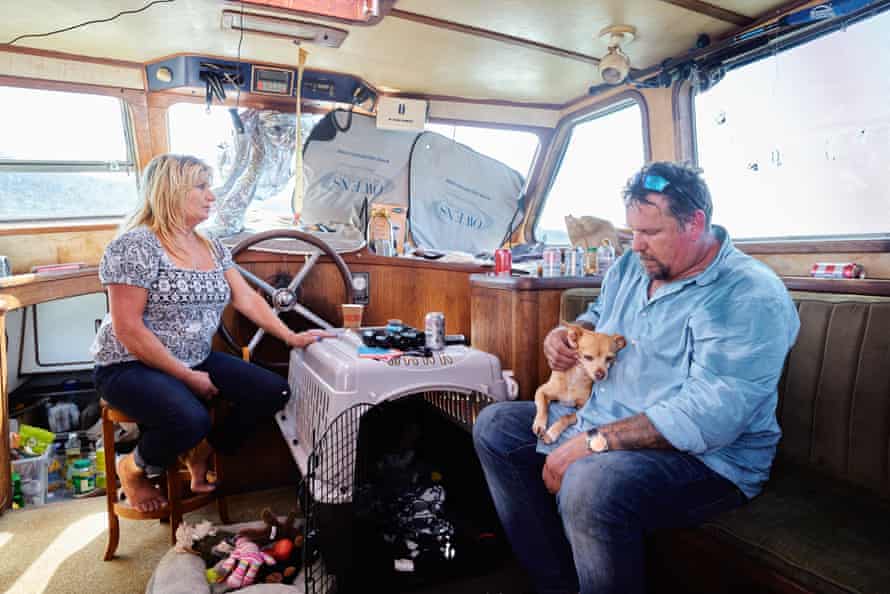
Top: Robyn Kelly on Richardson Bay. Bottom: Kelly and Billy McLean.
Robyn Kelly, a former skincare technician, moved into the anchorage after giving up her apartment and job to care for her sick mother, and ended up living on a 28ft power boat for a decade. She says it made an excellent home, until one day in 2019 she found it had been confiscated by the harbormaster.
“I went away for 24 hours and I came back and it was gone,” said Kelly, who has since filed a lawsuit against the authorities for destroying her boat and possessions.
Kelly and her two pups, Hank and Nacho, are currently staying on a friend’s boat; she’d like to move back to shore but her small income isn’t enough to make the deposit for an apartment and her arthritis is starting to give her trouble. “I couldn’t afford an apartment now,” she said. “I’d love one.”
Kelly’s friend, Billy McClean, is a fourth-generation Marin county resident. He can look across the water from where his Dutch cruiser is anchored and see stately houses constructed nearly a century ago by his grandfather, a local builder.
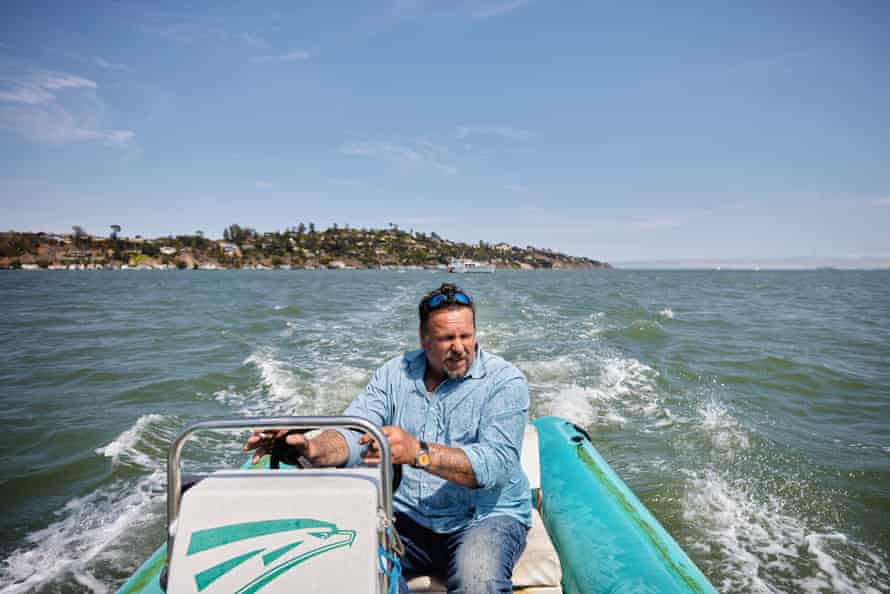
McClean drives his boat through Richardson Bay.
He recalls growing up seeing people living freely on the water. “When I was a teenager I used to come down here to the boats and buy pot from what I called ‘the hippies’,” he says. “Now I live here.”
McClean says people like him have been priced out of the region by an influx of tech workers making six-figure salaries. McClean couldn’t afford a decent apartment at his previous job working for a fencing company – so he bought a cheap motorboat and moved into the anchorage in 2009.
His vessel has a TV, DVD player and a small refrigerator, all powered by a generator. He doesn’t have much space inside, but from his white decks he can see green waters and California hillsides all around him.
“It’s nice out here – and then it’s not,” he said. “It’s a lot of work – and in the winter, it can be downright life threatening.”


Top: Brian Doris, left, the homeless coordinator Robbie Powelson, center, and Jeff Jacob Chase, right, talk in Doris’s boat. Bottom: Doris on his boat.
A short skiff ride across the anchorage from McClean, Brian Doris is fixing up an old pleasure yacht named Marlia that he bought for $1 after it was abandoned. The outside of his boat is still cluttered with toolboxes and boat repair supplies, but he’s transformed the interior with sumptuous Turkish rugs and plants.
“I’m not homeless, I’m houseless,” says Doris, who says he can no longer sleep on land because he misses the rocking of the waves.
Like many anchorage residents, Doris scoffs at the idea of being placed into shelter housing. “This is my home,” he says, adding if they want to take his boat, they should “bring a body bag”.
The last of a dying breed
Jennifer Friedenbach, the executive director of the San Francisco-based Coalition on Homelessness, says living on a boat was one of many “very-low-income housing options” that used to exist in California alongside residential hotels and live-work spaces in warehouses. But these types of marginal housing have vanished.
“Once gentrification came, those options disappeared, and that puts pressure on homelessness,” says Friedenbach.
Timothy Logan, a boat owner descended from three generations of California travelers, bought his houseboat cruiser the SS Patio nine years ago to serve as his primary residence. But since then, he has been kicked out of one harbor after another.
He started as a resident of a marina in Sacramento, living along river waters that eventually feed into the San Francisco Bay. That marina closed for development, so he moved his boat to other harbors, including ones in Antioch and Oakland, only to see boaters kicked out of those places too.
“Out of the blue, the whole state of California was like: ‘You can’t live on the water,’”he says.
While the SS Patio is still anchored out in Richardson Bay, Logan fears his boat will eventually end up being crushed like many of his friends’.
Havel, the harbormaster, and authorities governing both Richardson Bay and the state of California say they are determined that within five years, the last of the anchor-outs will be gone. For their part, the anchor-outs don’t intend to go quietly.
“We are a community; we’re trying to stick together,” says Logan.

Sausalito as seen from Richardson Bay in July.